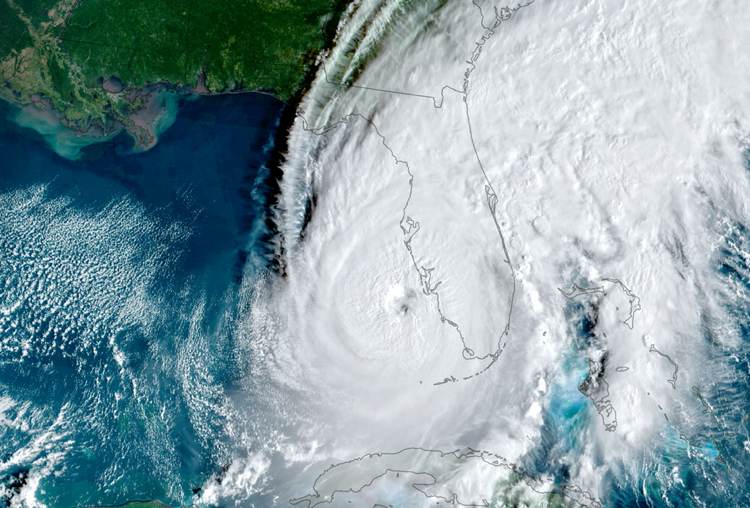Consultancy Lane Financial LLC has published an interesting paper where they analyse insurance-linked securities (ILS) ( catastrophe bond) market actual losses based on indicative pricing, versus modelled expected losses and global industry views, finding that the actual may underplay the expected, leading them to conclude the market remains inefficient.
 Morton Lane and Roger Beckwith of Lane Financial LLC, have taken a fresh look at the actual loss experience in the catastrophe bond market, versus some modelled assumption views of how the outstanding pool of ILS deals could have expected to take losses over the same period.
Morton Lane and Roger Beckwith of Lane Financial LLC, have taken a fresh look at the actual loss experience in the catastrophe bond market, versus some modelled assumption views of how the outstanding pool of ILS deals could have expected to take losses over the same period.
They do this including the context of recent hurricane Ian, the major ILS market loss of 2022.
First, it’s important to note that the actual loss experience of the catastrophe bond market continues to run well behind the expected losses that modelling would suggest the ILS market should have taken.
The analysis pegs actual ILS market losses over the period of 2001 to the end of 2022 at $5.308 billion, based on estimations that use the price indications available at the end of last year.
The expected levels of loss, based on modelled assumptions, come out far higher for the period at $7.668 billion.
Which looks like good news for the market and reflects the general understanding that, over time, the cat bond losses experienced and paid out by investors in the market run behind the numbers models at issuance have implied.
The Lane Financial analysis then looks at 2022 ILS market losses in isolation, so what would be expected to be hurricane Ian only, as the major loss activity that affected cat bonds during the year.
They compare the actual loss figure for 2022 to a calculation of the ILS share of global insured catastrophe loss data from the main reinsurance firm and broker sources, as well as to a calculation based on the expected severity of loss to ILS impacted, with both figures coming out a good deal higher than the current market-implied actual amounts.
“When we put all three perspectives together something is out of kilter, because a) using direct year end market prices suggests an ILS 2022 loss of $1,163 million, b) using Global numbers suggest an ILS 2022 loss of $1,778 million and c) using expected severity of loss on losing ILS suggest a 2022 loss of, a seemingly too high, $2,713 million,” they explained.
Adding that, “No doubt the real final number will be somewhere in the middle range – perhaps at the average of these three numbers $1,885 million.”
They explain that doing this analysis highlights the relatively significant difference in views available, depending on how it is calculated, saying that at some point these numbers must come closer together.
But then ask the question, why isn’t the answer resolved more quickly?
Stating that, “In an efficient market you would not have such a disconnect. Efficient markets are, as the academics say, arbitrage-free.”
They say, “It is important to clarify our stance on the ILS market. We are not saying the market is wrong. Instead, we are saying that its structure and composition leads to inefficiencies – to incompleteness.”
In order to make the ILS and catastrophe bond market more efficient and more liquid, Lane Financial’s principals suggest three steps need to be taken:
- First, the market needs to be more transparent and open.
- Second, ILS deals should ideally be listed on exchanges which have public disclosure requirements.
- A third and final step would be to issue ILS as public securities (instead of 144A Private placements).
Efficiencies can lead to a better functioning ILS market, with more and deeper investor participation, innovation in terms of instruments available, greater liquidity and overall much greater ILS market growth, they suggest.
Of course, it will take time for hurricane Ian’s actual losses to the ILS and cat bond market to clarify and most view the initial mark-downs as having been too high, hence the recovery in value seen.
But Lane Financial’s analysis shows that, when looking at industry experience, the recovery in value for Ian-exposed cat bonds may draw to a halt. In fact, there’s a case to say some positions values could worsen rather than continue to improve.
Time will tell though, and the true quantum of ILS market losses from hurricane Ian could still be debated months from now.
This is a very short precis of an excellent technical paper on catastrophe bonds and insurance-linked securities (ILS), one we’d advise you take the time to read.
You can download a copy of the paper here and see the rest of Lane Financial’s excellent work over on its website.
 View all of our Artemis Live video interviews and subscribe to our podcast.
View all of our Artemis Live video interviews and subscribe to our podcast.
All of our Artemis Live insurance-linked securities (ILS), catastrophe bonds and reinsurance video content and video interviews can be accessed online.
Our Artemis Live podcast can be subscribed to using the typical podcast services providers, including Apple, Google, Spotify and more.































